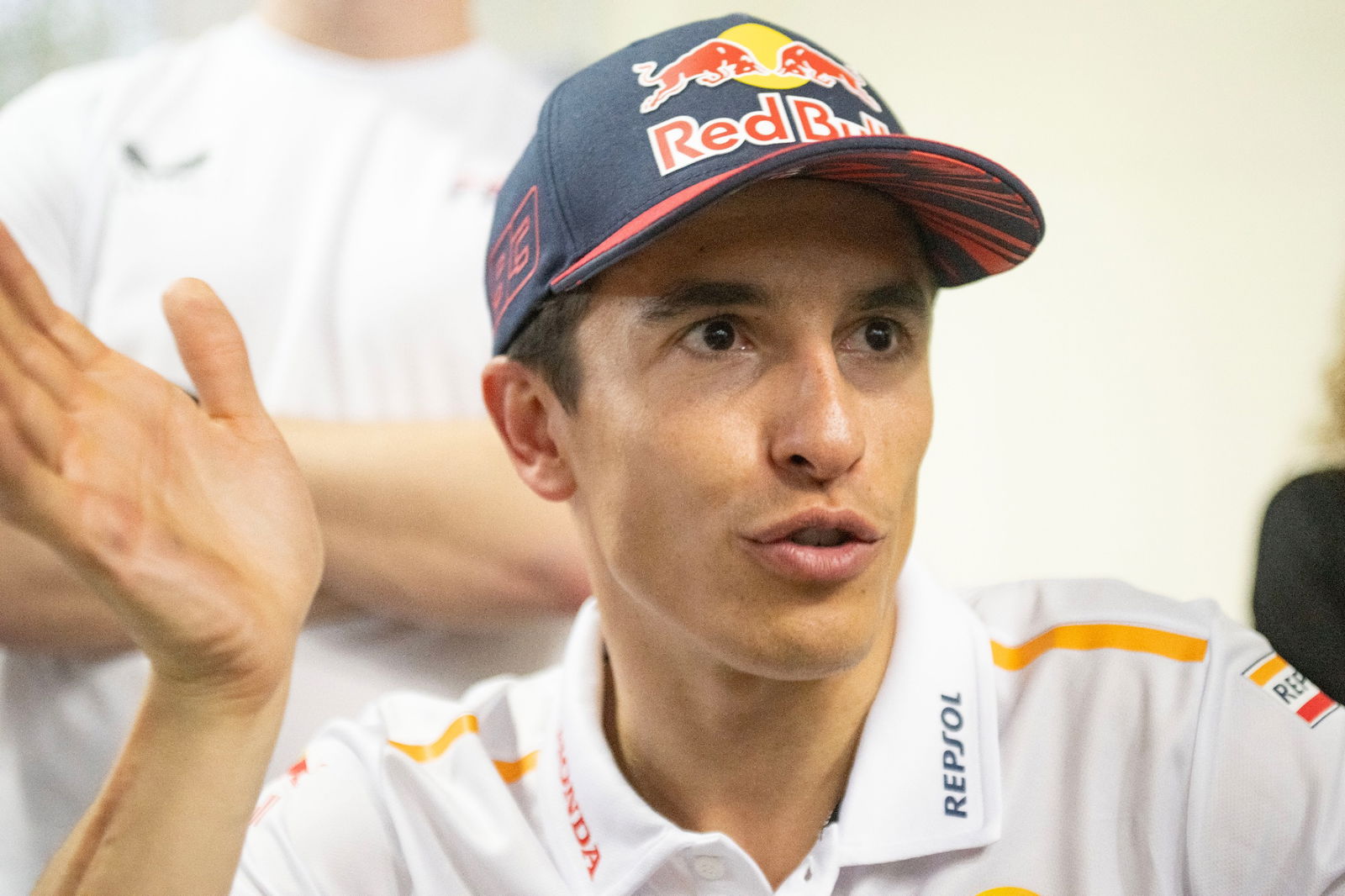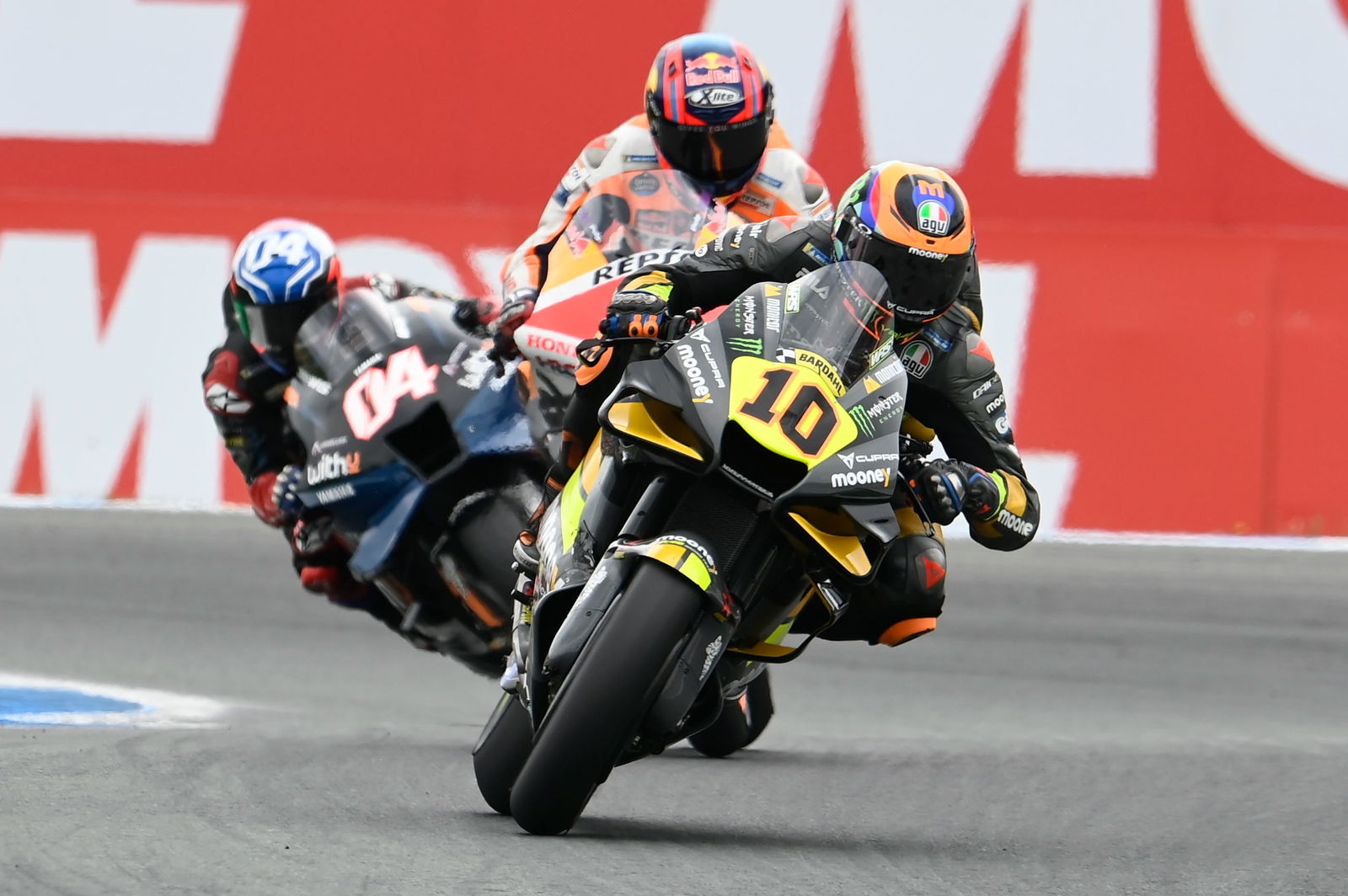Valentino Rossi’s home ‘had a lot of Ducati MotoGP leathers in ruins!’

But The Doctor’s failed attempt to repeat the spectacular Honda and Yamaha success at his ‘home’ manufacturer certainly cost him race wins and potentially a tenth world title, plus plenty of leathers.
After being the only Yamaha rider to win MotoGP races from 2004-2007, 29 of them to be precise, Rossi came under growing opposition from within his own team, courtesy of young rival Jorge Lorenzo.
The Spaniard finished runner-up to Rossi in 2009 and was leading the world championship heading into the Italian’s home event at Mugello 2010, when Rossi suffered the most serious injury of his career in the form of a badly broken leg.
Lorenzo went on to claim the world title at Sepang, where Rossi took the final win of his ‘first’ chapter at Yamaha, having announced a switch to Ducati for 2011.
- Marini: MotoGP title ‘has to be won by a factory team', it's business
- Bezzecchi: Valentino Rossi still fast, ‘kicked my arse!'
- FIRST LOOK: Marini, Bezzecchi present new VR46 Ducati livery
Ducati had won the 2007 title with Casey Stoner plus a further 13 MotoGP wins from 2008-2010, but Rossi and his crew badly underestimated the Australian’s ability to mask the Desmosedici’s deficiencies.
“[Rossi] wanted to demonstrate that he could win not only with Yamaha, but with another bike. Even more with Ducati, an Italian bike,” Rossi’s best friend and assistant Uccio Salucci told MotoGP.com’s MotoGP Stories: The Resurrection of Ducati video.
“When Valentino tested the [Ducati] for the first time, he said: ‘it isn’t easy to ride’.
“The bike was beautiful but very strange. The engine did all the work. It was a lump of metal and the rider didn’t have any feeling.”
“[Rossi] immediately said the bike was not what he expected,” confirmed Rossi’s data engineer Matteo Flamigni. “It was a bit more difficult. There were many problems to fix for his riding style.”
While an instant 2011 title challenge was always seen as a stretch, given even Stoner’s decreasing success since 2007, Ducati had been confident of giving Rossi what he needed by 2012.
But there was to be no breakthrough.
“The reality is that I was never fast with that bike,” Rossi later admitted. “Unfortunately we were not able to fix the problems.”
Salucci explained: “The riding style of Valentino didn’t match the bike. He was used to the Yamaha - its strong point was its rideability. That characteristic was lost at Ducati. And when he tried to go fast he crashed a lot!
“I remember at home we had a lot of Ducati leathers in ruins! Unfortunately, it continued that way.”
After a single podium in 2011, Rossi managed two Ducati rostrums the following season before cutting his losses and securing a return to Yamaha for 2013.
“Valentino found it more complicated than each of us expected,” said Ducati CEO Claudio Domenicali.
Back at Yamaha, the team he helped revive in 2004, Rossi won a further ten races and fought for the 2015 title against team-mate Lorenzo until the final round.
The Italian celebrated his last MotoGP podium in 2020 and, after being moved to the satellite Petronas team, retired at the end of 2021.
Rossi left the sport, in his early 40s, with a record of 89 premier-class wins.
However, his 115 victories in all classes were just seven behind countryman Giacomo Agostini. Prior to joining Ducati, Rossi had won at least four races per season from 2001-2009.
Meanwhile, Lorenzo took up the Ducati MotoGP challenge in 2017, enduring a winless debut season before three wins in 2018, but wasn't able to mount a sustained title challenge.
Team-mate Andrea Dovizioso came closer, finishing as title runner-up to Marc Marquez in 2017, 2018 and 2019, before Ducati finally won its second MotoGP crown last season - at the hands of Rossi's VR46 Academy protegee Francesco Bagnaia.

